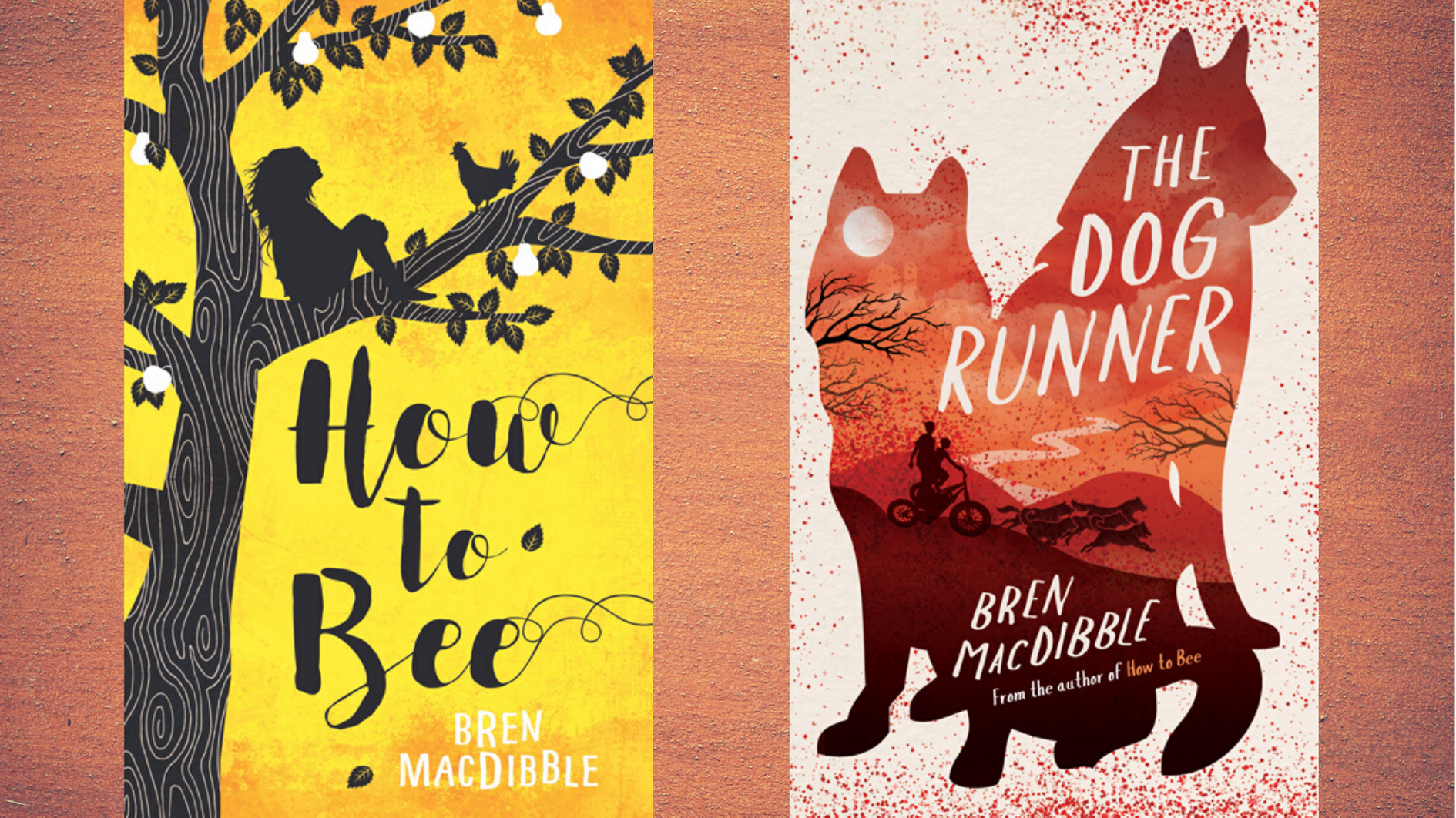We grew up watching the world end – at least on-screen. Our children are growing up watching it happen in real time. How do we prepare them to inherit a world that’s (supposedly) about to end? Today Elizabeth Kirkby-McLeod, an Auckland writer, unpacks climate change literature for children and the responsibilities of those who produce it.

In the late 1990s the world was always about to end on screen. An asteroid is coming! Aliens are arriving! A volcano is erupting! But don’t worry – Will Smith is here! In movies like Armageddon and Independence Day humanity pulls together and overcomes even the biggest of challenges with courage, love and sacrifice.
Ten years later in I Am Legend, our hero Will Smith is still around at the end of the world, but he’s the only one. Ten years on from that and the end of the world has come and gone on screen and in literature and so have our heroes. This is now a major recurring narrative, right when we face one of the toughest real world challenges: climate change.
I think it is time to consider the mental health impact on children of continuously putting before them a future beyond redemption: a future where adults care only for selfish gain and cannot be trusted to guide, assist or care about the wellbeing of young people. It is time to consider the effects that arise from saturating a generation in apocalyptic horror stories.
It is time to consider the effects that arise from saturating a generation in apocalyptic horror stories.
Feelings of despair and hopelessness about climate change and the future of our planet are a real issue. Stuff.co.nz reports that Kiwis are ‘suffering depression, anxiety and hopelessness because of climate change,’ with young people rating climate change as a top concern. As writers, it is easy to want to write our way out of this deep feeling of hopelessness. It feels like a way of doing something.
But if different writers are constantly creating dystopian worlds of fear and failure over and over again, I argue all we are doing is passing on our despair to the next generation. I am not advocating simplistic viewpoints or naïve narratives in children’s literature. But I do think we must begin to consider what happens if our children see inevitable climate collapse (and associated greed, selfishness and hate) as the normalised future state for humanity. And I’m not the only one.
British environmental campaigner, communications specialist and writer George Marshall has made a study of language and climate change. He proposes that a narrative that is hopeless and apocalyptic does not motivate people towards collective change; instead it distances the reader from the actions they need to take today and sometimes pushes them into despair. Talking on the BBC podcast Word of Mouth, Marshall says the narratives we really need are ones of togetherness. Ones that give the message that ‘we’re going to come together, we are going to work together, cooperate, support and love each other in order to get through it.’ Right now we have an opportunity in literature to either hold up a vision which tells children that all is lost – or to hold up a vision of hope.
…a narrative that is hopeless and apocalyptic does not motivate people towards collective change; instead it distances the reader from the actions they need to take today and sometimes pushes them into despair.
I may be convincing you in theory, but what about practice? How might storytelling give hope, show children they can be a part of the solution and redeem our world – without falling into ‘bright-siding’ or denying the depth of the problem? And, on the other hand, how might some climate change literature be distancing, encouraging paralysing inaction and distrust? We can look at the work of New Zealand’s leading climate change fiction writer for children, Bren MacDibble, for examples of both.
MacDibble’s first book, How to Bee, won awards in the Children’s Book Council of Australia’s Children’s Book Awards, the New Zealand Book Awards for Children and Young Adults (NZCYA), and the NSW Premiers Literary Awards. Her book The Dog Runner was also an award-winner, picking up a second NZCYA Wright Family Foundation Esther Glen Award for Junior Fiction at in as many years. In both books the main characters live in a world that has experienced a major environmental collapse. Yet the narratives are almost in opposition to each other (*spoilers ahead*).
In How to Bee, pollinating insects have been wiped out. A great famine follows and there is much hunger and poverty. However, MacDibble crafts a narrative where people work together, and new farming practices are developed using children as pollinators. As they run and bounce through the branches, it is these children who are feeding the world. The main character, Peony, longs to be a ‘bee’; she is proud of her work on the farm and, although she lives in a very simple village, she is cared for and loved. How to Bee tells children that environmental challenges are hard, they may even irrevocably change our way of life, but as Marshall would argue, ‘we can do it because that’s the kind of people we are.’
…environmental challenges are hard, they may even irrevocably change our way of life, but […] ‘we can do it because that’s the kind of people we are’.
In The Dog Runner, all grass crops have become diseased and died. People have lost both grains, such as wheat and rice, and most animal protein, as sheep and cows starve on barren land. In contrast to How to Bee, in The Dog Runner MacDibble makes victims of her child characters victims, Emery and Ella. Their only contributions are to save themselves, which is an outlook shared by the majority of other characters in the book. In one scene, the children stop under a bridge where a mother and baby are also resting. Instead of engaging with the children, the mother flees and it is left to our narrator, Ella, to extend an offer of help. However, Emery quickly shuts her down.
‘”What if that woman runs into some mean people further up the path, and they grab her baby and she tells them there’s a couple of kids under the bridge who offered her food? What do you think those mean people do next?”
“Oh,” I say.
“That woman’s doing the right thing. Stay away from other people. Mind your own business…”‘
The adults of The Dog Runner are not the kind of people who can rise to challenges together. Instead, we are the kind of people who give over our human loving kindness to fear and selfish gain. This difference matters. In The Dog Runner, Emery’s outlook is that radical kindness, sharing, and generosity have no place in a world facing crisis. His father once said that ‘when the world turns upside down, the ones that survive are the first ones who learn to walk on their heads.’ Emery warps this by demonstrating a belief that people like the elderly couple who offer the pair food and shelter are ‘stupid’ in their refusal to give up their human dignity and compassion in favour of survival.
‘When the world turns upside down, the ones that survive are the first ones who learn to walk on their heads.’
In contrast, many characters in How to Bee demonstrate radical kindness and self-sacrifice, especially Peony and another child character, Esmeralda. At one point in the story, Peony is forcibly taken away from her beloved farm by her mother. Peony longs to get home and Esmeralda, the daughter of the rich family she is working for, agrees to help her. Esmeralda struggles with agoraphobia but darts out into the middle of a crowd to create a distraction and allow Peony to escape. However, when she sees Esmeralda in terror on the street, Peony gives up her chance to return to the farm and instead rescues Esmeralda.
‘”You – you came back from me!” she whispers. “You were away, but you came back.”
I nod. “You needed help.”
She smiles. “You’re a good friend.”
“You’re a good friend,” I say, “coz even though you’s scared you still tried to help me.”’
It is undeniable that in times of great crisis some people do choose the darker side of humanity. In the Australian wildfires there have been occurrences of looting in burnt neighbourhoods. But many, many more have chosen to open their doors to strangers; been inspired to heroic acts of bravery, to generosity, to volunteerism. They have gathered and supported each other; they have prayed. We saw the same thing in New Zealand after the Christchurch earthquakes and the mosque killings.
George Marshall says climate change can be considered a linguistic battlefield; one where language is being used and abused on different sides. Our climate change fiction narratives for children matter. They can have huge outcomes on both children’s mental health and on whether they feel hope that they can be part of the solution. In order to really help, we need more narratives like How to Bee.
Our climate change fiction narratives for children matter.
Flashback to the year 2001. In the Star Trek: Voyager episode ‘The Void’, the starship USS Voyager and its crew are pulled into a vortex that is devoid of all resources, and from which they cannot escape on their own. They are immediately set on by raiders who tell them the only way to survive is to join a gang and raid new arrivals. No, says Captain Janeway, humanity doesn’t make choices like that anymore. Instead she begins a new alliance – any ship can join and share Voyager’s resources if they also share their own. Through pooling their creativity, technology and skills they find the only way out of the void.
Because of climate change humanity may be entering many different voids. I don’t believe we should hold up a vision to children of a world where no one is to be trusted and no one will care for them. A vision where they are victims. They need more than ever a vision of loving kindness as a universal, non-negotiable, shared human virtue. A vision where they are the heart of the solution. ‘We have no choice on this,”’ says Marshall, ‘we have to find a way of creating compelling narratives which precipitate action, which give people a sense of shared purpose and identity,’ so that – together – we can find a way through.
Editors’ note: The Reckoning is a regular column where children’s literature experts air their thoughts, views and grievances. They’re not necessarily the views of the editors or our readers. We would love to hear your response to any of The Reckonings – join in the discussion over on Facebook.

Elizabeth Kirkby-McLeod
Elizabeth (Libby) Kirkby-McLeod is an Auckland author who has been published in a range of journals. Her first poetry collection, Family Instructions Upon Release, was published in November 2019 with The Cuba Press. She has a book forthcoming with children's publisher Giltedge Publishing. Elizabeth has a First Class Master of Creative Writing from AUT, where she was a recipient of the Dean’s Award for Excellence in Postgraduate Study.



